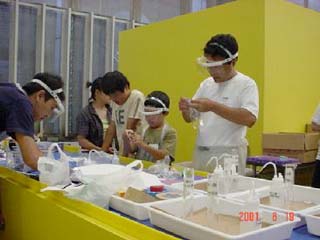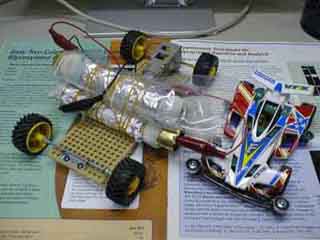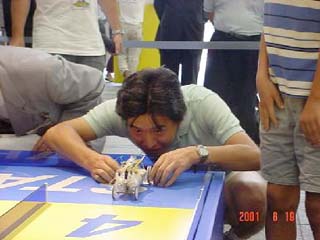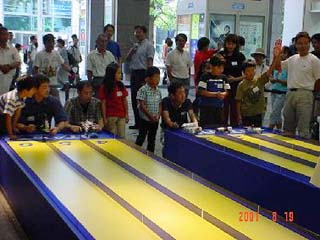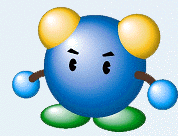
The first race was held in the major exposition at Takashimaya with financial support from The Association of Battery Industry in Japan. Two classes were set according to the age of challengers, elementary school pupil and patent class and high and junior high school student class. The numbers of teams that participated were 21 for the first class and 42 for the second class. A big audience formed during race. The fastest record was 5.6 seconds for 10 meters.


